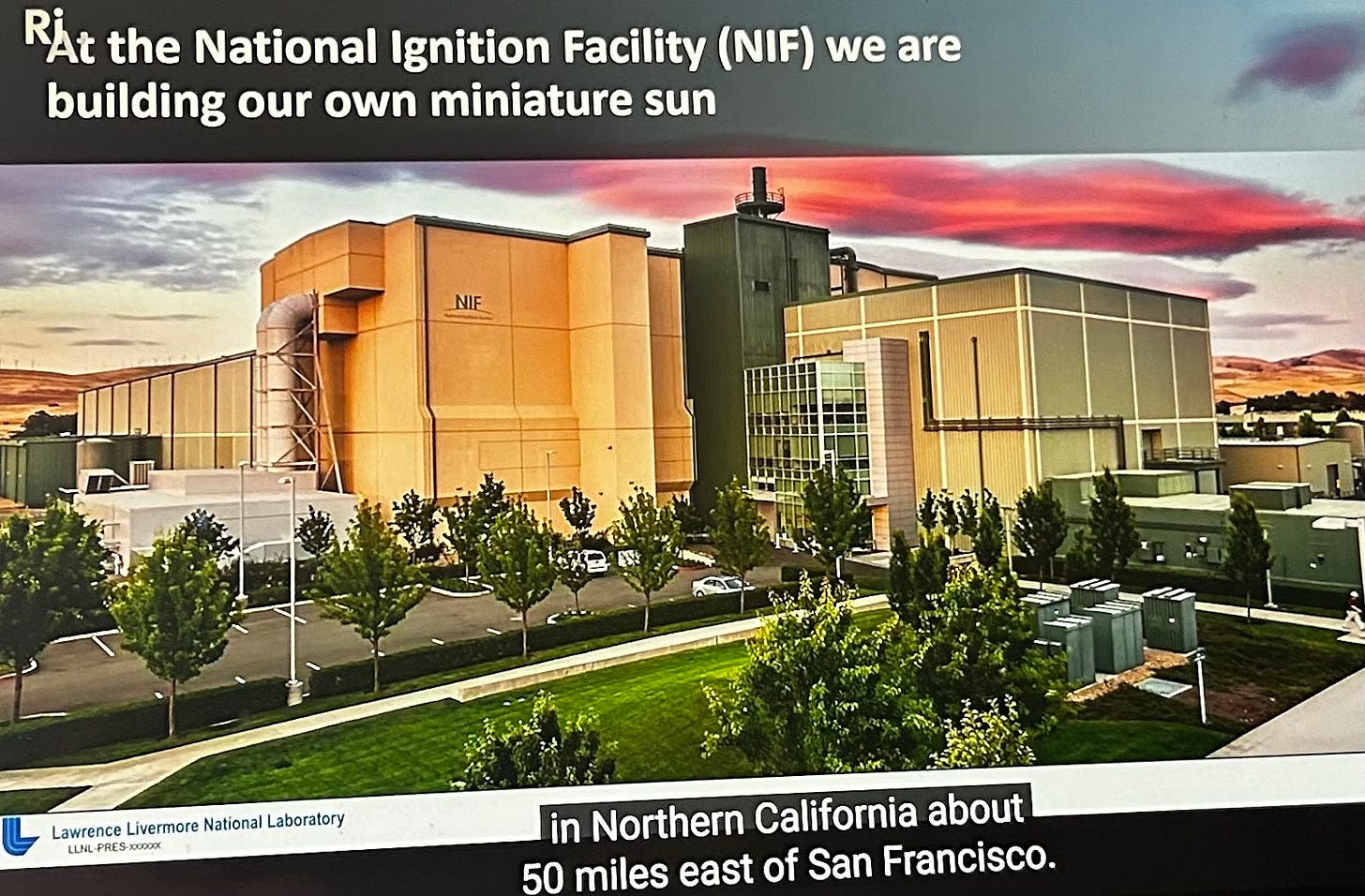#90 Dying to Know You
Exploring the Ethics of Grief Bots; The Persisting Challenges to Nuclear Fusion
Today, Rohan Pai briefly explores the morbidly fascinating world of AI Grief Bots while Sridhar Krishna dissects the challenges that nuclear fusion has seemingly been facing for decades.
If you like the newsletter, you will love to read our in-depth research and analysis at https://takshashila.org.in/high-tech-geopolitics.
Also, we are hiring! If you are passionate about working on emerging areas of contention at the intersection of technology and international relations, check out the Staff Research Analyst position with Takshashila’s High-Tech Geopolitics programme here.
Cyberpolitik: Exploring the Ethics of Grief Bots
— Rohan Pai
Grief, one of the many quintessential human experiences, has steadily begun to make its foray into the tech industry. Previously thought to have only existed within the confines of science fiction, communication with a deceased friend or family member is now a technological reality with the advent of grief bots. As defined by researchers at the University of Cambridge, grief bots are “AI chatbots that simulate the language patterns and personality traits of the dead using the digital footprints they leave behind”. Digital footprints can take on a number of forms, of course, from web browsing history to Instagram posts. Developed with the intention to simulate conversations between the living and the dead, though, grief bots relied primarily upon text messages as training data in the initial phases.
Eugenia Kuyda, co-founder of Luka, became one of the pioneers in the space of grief bots when she created the “Roman” bot. Named after her friend who passed away in a hit-and-run, the Roman bot was trained using thousands of text exchanges between herself and Roman and is claimed to have provided immediate comfort to bereaved relatives. In the current climate, with deepfake technology achieving degrees of unforeseen accuracy, the grief bot industry is undergoing a paradigm shift. Beyond texting simulations, Chinese companies like Shanghai Fushouyun now offer customers the chance to interact face-to-face with AI-generated avatars that mimic the appearance and voice of their deceased loved ones.
Grief bots, from a purely legal standpoint, raise the contentious question of whether the privacy of someone’s personal data continues to hold water after death. During the landmark Right to Privacy judgment in 2017, the Supreme Court observed that the right “remains with the human being till he/she breathes last”. The idea of “post-mortem privacy” remains largely unexplored, lacking concrete laws in most countries, and the situation will only be further exacerbated in the Information Age.
In a 2018 case involving the death of a 15-year-old girl, the Federal Court of Justice in Germany ruled that the bereaved parents were entitled to complete access to their daughter’s Facebook account. Although an appeals court initially ruled in favour of Facebook, citing privacy concerns, the parents claimed they had a right to read their daughter’s messages and understand whether her cause of death was suicide or accidental. On the contrary, however, the Calcutta High Court in 2022 ruled in favour of the post-mortem privacy of Rashika Jain after her in-laws filed an RTI application to demand access to her private WhatsApp messages.
Given the vast uncertainties about the inheritance of personal data, most social media companies have drafted policies for addressing the accounts of deceased users. While Facebook and Instagram offer the option for family members to ‘memorialise’ these accounts and post tributes, TikTok and X permanently delete them upon a request that submits valid proof of death. Google’s Inactive Account Manager allows users to nominate another user who will be granted complete access to their data in case of account inactivity for a pre-specified length of time. Digital inheritance awareness will have a direct impact on the advancement of the grief bot industry, whether that be positive or negative.
Consent of the deceased aside, grief bots have the potential to haunt rather than console bereaved family members. In a paper published last month on the digital afterlife industry, AI ethicists hypothesised some troubling scenarios, such as the children of a deceased parent being unwillingly spammed with notifications from a grief bot that was created without their knowledge. The fundamental issue, though, is that even the best-case scenario, where consent is sought from both parties, offers little evidence of the long-term psychological effects of grief bots.
In the Black Mirror episode ‘Be Right Back’, a widow is shown to develop an addiction to her late husband’s grief bot and distance herself from other living people. Rivalling this bleak outlook, some believe grief bots are simply the modern-day variant of memorialising the dead, similar to displaying framed photographs. Whatever the outcome, it’s only a matter of time before these repercussions are felt because, unlike human beings, the grief tech industry isn’t dying anytime soon.
India is set to host the Quad Leaders' Summit in 2024. Subscribe to Takshashila's Quad Bulletin, a fortnightly newsletter that tracks the Quad's activities through the Indo-Pacific.
Your weekly dose of All Things China, with an upcoming particular focus on Chinese discourses on defence, foreign policy, tech, and India, awaits you in the Eye on China newsletter!
The Takshashila Geospatial Bulletin is a monthly dispatch of Geospatial insights for India’s strategic affairs. Subscribe now!
Technomachy: Always Twenty Years Away - The Persisting Challenges to Nuclear Fusion
— Sridhar Krishna
Nuclear fusion promises a green energy future, unlike any other source of energy. It is a clean energy reaction which does not create any carbon emissions by themselves. The by-product is helium, a harmless inert gas which does not require to be disposed of carefully. According to the Culham Centre for Fusion Energy, a kilogram of fusion fuel could provide almost as much energy as 10 million kilograms of fossil fuel. Nuclear accidents and Chornobyl-type fallouts are not possible in a fusion reactor due to the extremely small amount of radioactive material and the effort required to keep the fusion reaction going.
Yet, “twenty years from now”, is what scientists in the know have been saying for the last fifty years when anyone asked how long it will take for the commercial availability of energy through nuclear fusion. People eventually stopped believing in such an energy future.
So, what is preventing nuclear fusion from taking off?
Arthur Eddington published his theory that stars draw their energy from the fusion of hydrogen into helium in the International Constitution of the Stars in 1926. The science was further studied and understood in the 1930s. Robert d’Escourt Atkinson, Fritz Houtermans and Ernest Rutherford made giant strides in this space, and Rutherford’s student Mark Oliphant showed that heavy hydrogen nuclei could react with each other. The list of scientists who worked on this is long but it has remained in the lab for almost a hundred years.
There are many challenges to the commercial availability of energy through nuclear fusion, but here are some key ones:
To overcome electromagnetic repulsion, very high temperatures, 100 - 150 million degrees, which is 7 to 10 times hotter than at the centre of the sun, are required.
Then, this temperature will need to be sustained for a sufficient period for a fusion reaction to take place, and powerful magnetic fields will keep it away from the walls of the container.
Fuel needed to sustain the reaction - while deuterium can be easily extracted from seawater, the total global availability of tritium is only 20 kilograms, while 300 grams of tritium will be required every day to generate just 800 megawatts of electrical power. It can, however, be generated by splitting lithium.
Creating net energy gain has been very hard, considering the amount of energy required to heat up the plasma. It is only in Dec 2022 that scientists have managed to have a net energy gain of 1.9, even if for a very short time. They need to get it to 50 to 100 before it can be commercialized.
What progress has been made in recent years to instil new hope?
$6 Billion in investments in 40 private companies trying different approaches and increased probability of success
Artificial Intelligence has made predicting plasma disruptions increasingly possible, allowing for improved plasma containment
100+ Public-private projects are ongoing
Net energy gain was demonstrated at the Lawrence Livermore Lab in Dec 2022 at the National Ignition Facility.
The US Department of Energy has released a Bold Decadal Vision to commercialize Fusion through private-public partnerships and international collaboration.
Bill Gates, Jeff Bezos and George Soros are among those who have invested in Nuclear Fusion startups
So how long will it take for commercial availability of energy from fusion reactors?
Many private fusion power startups are using various approaches and claim they can provide power to the grid by the early 2030s or even earlier. Some, like Helion, are using alternate fuels like Helium 3 in place of Tritium. Many of them have quite advanced machines, but all of them are demonstration machines, and commercial power is still quite far away.
One thing has changed, though. The twenty-year timeframe for commercial fusion seems to have changed to 15 to 10 years.
Yet, it will be well into the 2050s before nuclear fusion can meet a significant percentage of the world’s energy needs.
So, any dreams one may have that one can forget about the need to conserve energy and protect the environment are busted. We need to continue to drive down usage of energy and develop new alternate green energy sources while hoping for an energy-rich future with clean green fusion energy,
What We're Reading (or Listening to)
[Opinion] Chinese armed forces have been upgrading. India must keep up, by Anushka Saxena
[Takshashila Blog] Japan’s Strategic Calculus: Does Taiwan matter? , Vanshika Saraf
[Takshashila Discussion Document] What Should India's Critical Technology Policy Look Like? , by Saurabh Todi
[Opinion] Developed country ambitions need deep structural reforms, by M Govinda Rao






